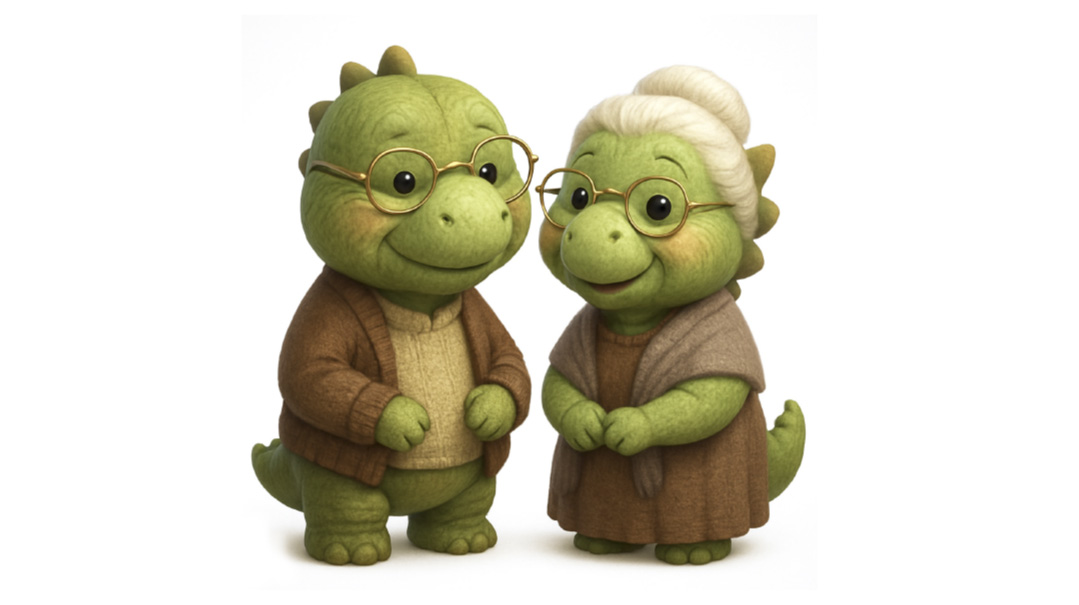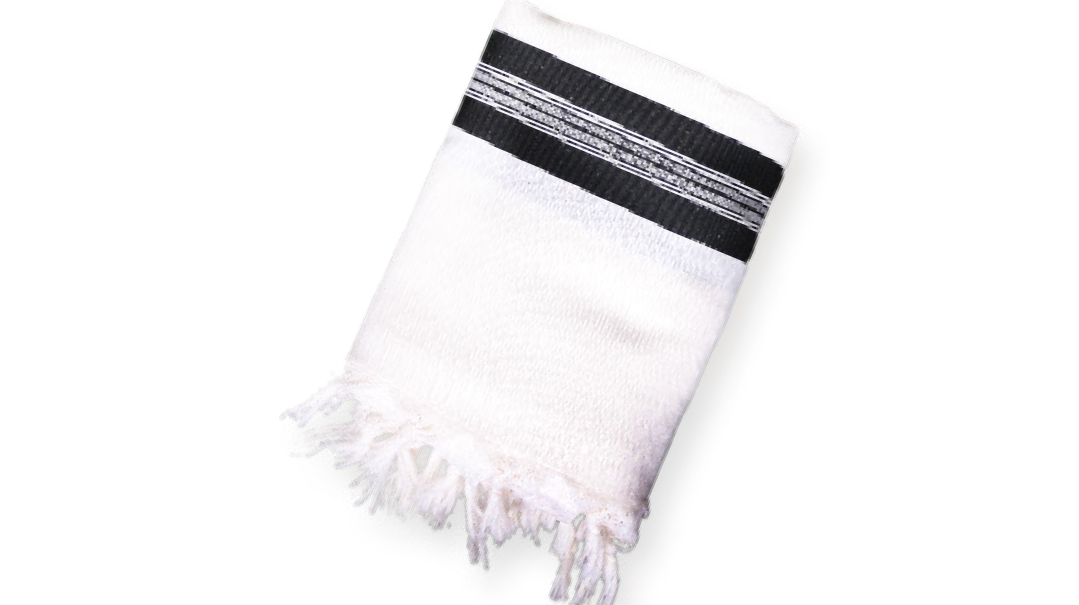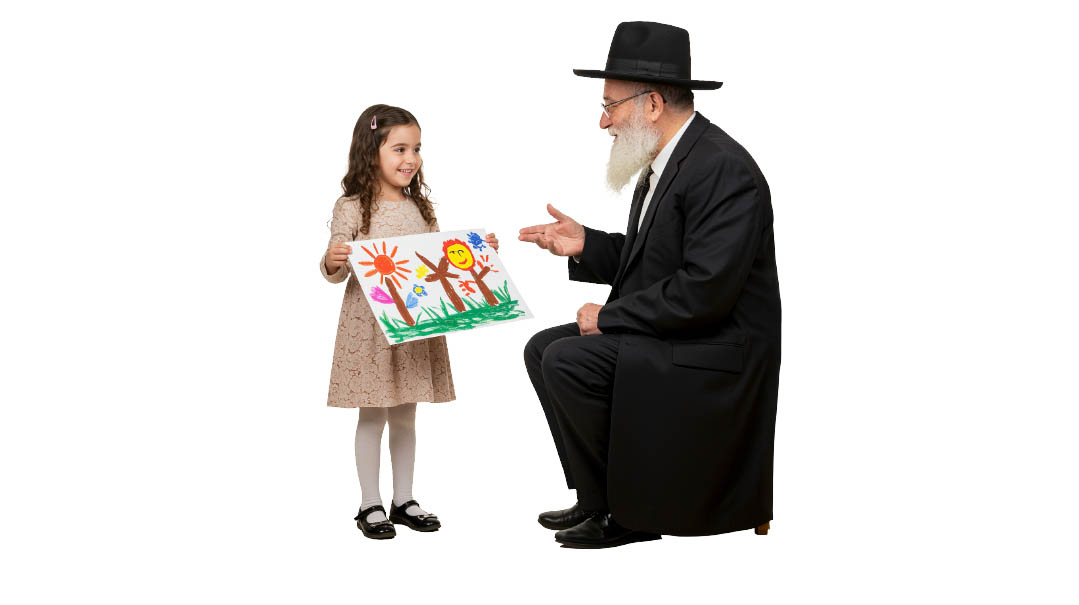The Man in the Photo
| January 17, 2023Although I never met Zaida, I now feel his presence in my life

MY eyes are closed as I listen to a scratchy cassette recording of my paternal grandfather’s strong, passionate voice. As Rav Yaakov Schapiro fervently sings the tefillah of Bircas Hachodesh, his voice envelops me with love. I feel safe, protected, and connected to my Zaida, whose voice had been hidden for nearly six decades.
After the Anschluss in 1938, my father’s family and their entire community were expelled from their homes in Kittsee, Austria by the Nazis. With only the clothes on their backs, and with no neighboring country willing to take them in, the group of 60-odd Jews were placed on a rat-infested cargo barge for months and then confined to a detention camp for over a year. Even while finding himself in a most perilous and frightening situation, Zaida Yaakov was filled with optimism and hakaras hatov. In a letter to his chavrusa during the harrowing ordeal, without minimizing the trauma, he wrote, “There are no words that can adequately express my deep sense of gratitude to Hashem for the kindness He did on behalf of my family.”
My family was granted asylum and arrived in the United States just prior to the outbreak of the war. They settled in Spring Valley, New York. Zaida Yaakov was instrumental in establishing the Yeshiva of Spring Valley, which today has an enrollment of over 1,800 students. But in a tragic turn of fate, in 1945 he passed away suddenly at the age of 42, due to complications from surgery. His widow and four children were shocked and pained into a silence that lasted for years.
That’s why all I knew of Zaida Yaakov while growing up were a few facts, and then there were two photos I found in a dark corner of our basement. One is a family portrait of my grandparents and their children taken upon their arrival to the United States. My Zaida looks distinguished with his beard, hat, and tie, relieved to have brought his family to safety. In the other photo, my Zaida’s expression is somber as he holds a piece of klaf from a sefer Torah that had been slashed by the Nazis. The tangible pain etched on his face becomes my pain, teaching me the value of the Torah in a way nothing else can. As a child, when I would stumble upon this photo, which was not on display, I would wonder: Who was the man behind the face in the photo? What qualities defined my Zaida? Did he ever smile?
Only when my brother and I were emptying our parents’ home after our mother’s passing did we stumble upon a treasure trove of letters, photos, and documents that provided a gateway into the landscape of my family history. So began my search for my roots, characterized by an unquenchable thirst for any piece of information I could get my hands on. I analyzed every document and pursued every lead. Every new fact I discovered became a priceless piece of the puzzle.
As I searched, the photo of my Zaida slowly began to take on new dimensions. It was as though the man, frozen in time and flattened into silence behind a piece of glass, suddenly broke free and gradually began to take form. Every new detail furthered this transformation.
Zaida Yaakov was the chazzan, shochet, and assistant rabbi of Kittsee, respected for his Torah knowledge, middos, and yiras Shamayim. His voice was described as a “kol lehavos aish.” He was open and loving to every Jew and extremely devoted to his family, accepting and protective of his sister who had moved to America and was no longer frum. In a letter from 1925, he wrote, “I have decided for my whole life I will support you… I will guard you like the eyes in my head, and I hope that you will be happy.” It was indeed this sister who worked relentlessly until she was able to procure the visas that were required for the family to enter the United States.
My grandparents lost their families in the war, but two nephews survived. After the war, when the fate of their relatives was not yet clear, Zaida Yaakov encouraged his nephews not to lose hope of finding their parents, aunts, uncles, and cousins. Steeped in emunah, he wrote to them, “We must believe that this is a gezeirah from Shamayim, and don’t give up, as the chachamim say: ‘Even if a sharp sword is resting upon one’s neck, don’t give up on rachamim…’ The important thing is to daven because we believe that tefillah helps.”
My heart overflowed when I found family photos of Zaida happily interacting with my bubby and their children, as well as a stunning photo of him smiling ear to ear with a twinkle in his eye. So he did smile, after all.
I traveled with my husband to Kittsee and tracked down a non-Jewish woman in her nineties whose father had been the caretaker of the shul. He and my Zaida had been exceptionally close, and she remembered my family well. Her father had risked his life to bring some of Zaida’s seforim, Bubby’s leichter, and some clothing to my family when they were confined by the Nazis. He knew which possessions would be of utmost importance to Zaida. The woman nostalgically shared her memories of the carefree days when our families had been closely intertwined, including poignant details I had never heard but which further developed the image of the Zaida I was finally getting to know.
While my family puzzle is far from complete, enough of a picture has emerged for me to appreciate my yichus. Although I never met Zaida, I now feel his presence in my life. His legacy includes grandchildren, great-grandchildren, and great-great-grandchildren leading lives impacted by his example, including several who carry his name. When all is well in my life, I can tap into his happiness. When times are difficult, I tap into his uncompromising emunah, which soothes me. The pictures that once collected dust in my family’s basement now adorn my wall. As I walk by, I feel a hug from the man in the photo. And then I’m the one who’s smiling.
(Originally featured in Family First, Issue 827)
Oops! We could not locate your form.







